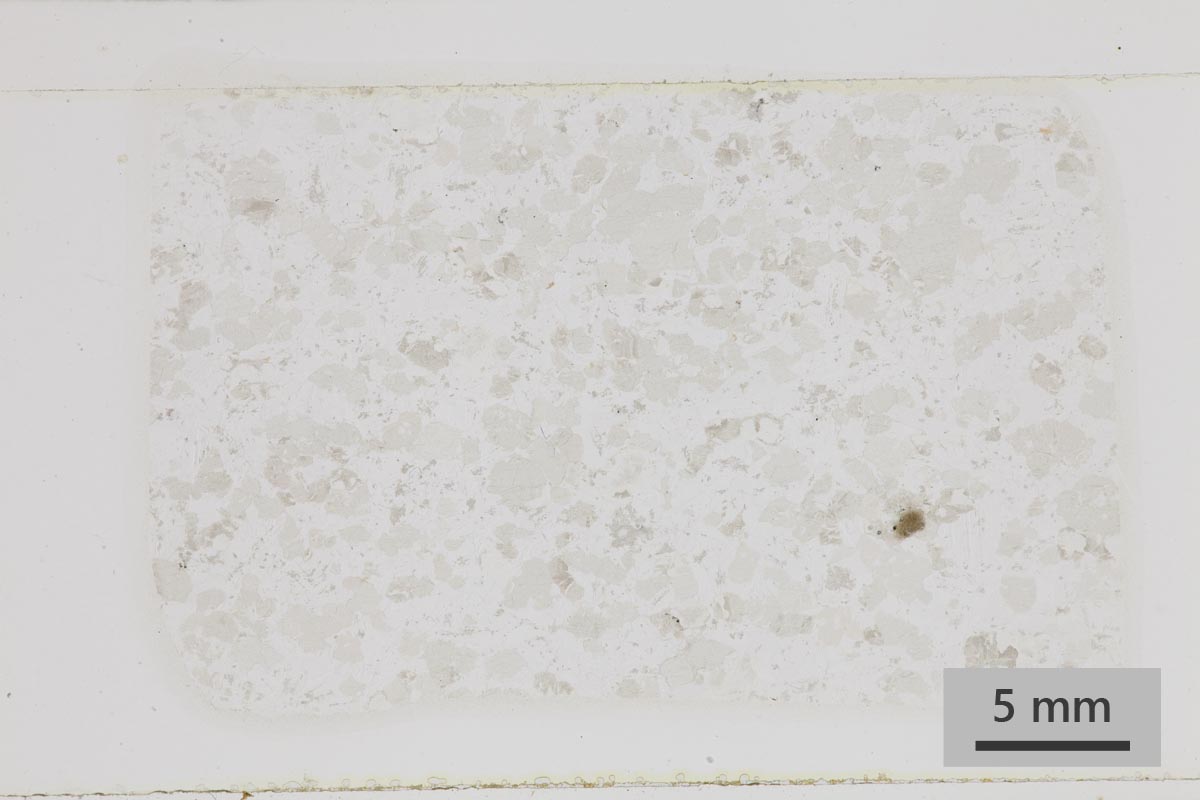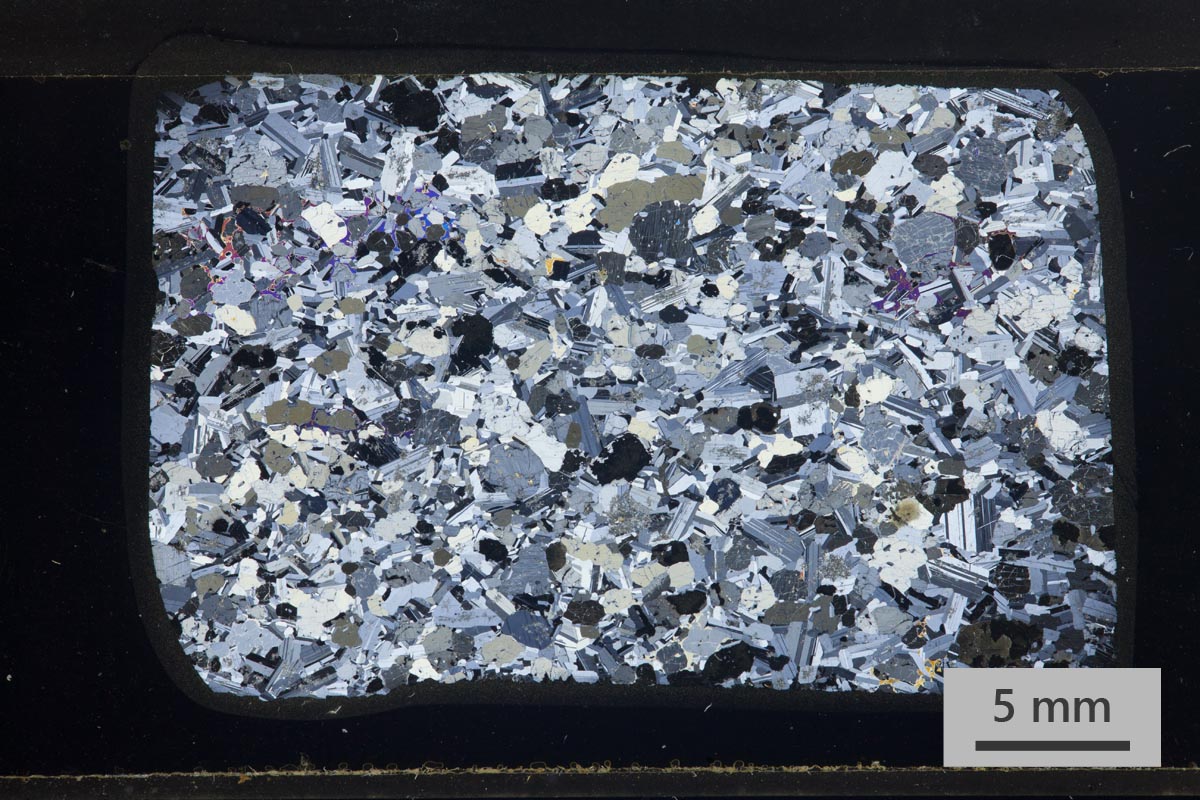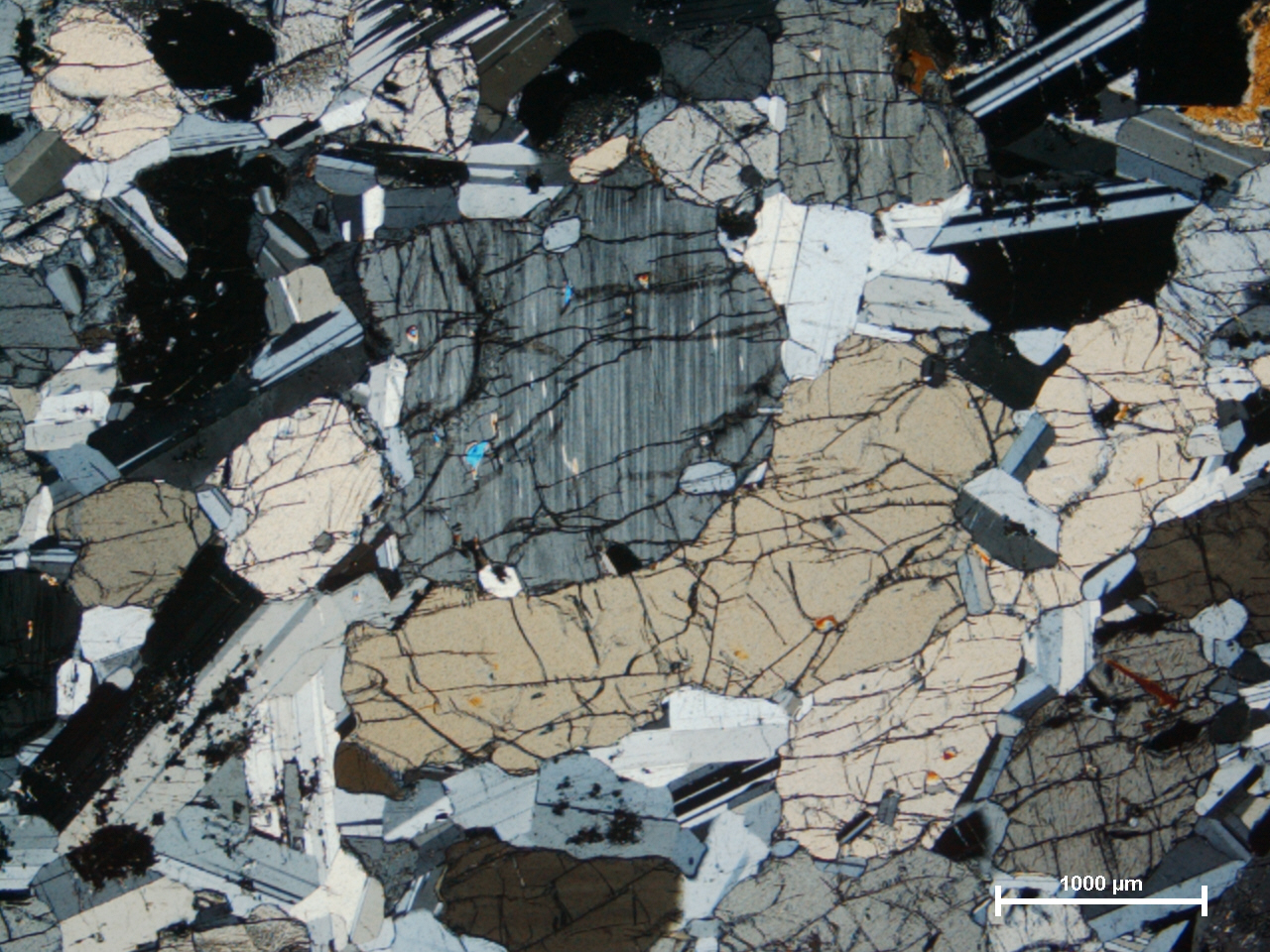  |
CSM Rock Collection
|
Norite, IG09NR02
|
DescriptionNorite is an igneous rock that is very similar to gabbro. It is dominated by plagioclase with orthopyroxene as the dominant mafic silicate. Norite may also carry minor olivine and clinopyroxene as well as chromite, magnetite, and/or ilmenite. Norite occurs in layered mafic-ultramafic intrusions and is typically a cumulate |
Hand specimen
|
|
|
Thin section |
Thin section in plane polarised light (full section) In plane-polarised light, the sample displays a granular texture with plagioclase (clear, white) and orthopyroxene (light greenish-grey). |
Thin section in cross polarised light (full section) In cross-polarised light the albite twinning in plagioclase becomes distinct, and grain boundaries between crystals become apparent. Well shaped crystals of orthopyroxene are recognised by their low interference colours (grey to light brown) and lack of twinning. Clinopyroxene is recognised by the reddish-blue and purple interferences colours and is interstitial to the plagioclase and orthopyroxene. |
Thin section, detail Under crossed polarisers, the blocky plagioclase crystals display the classical multiple and simple twinning (recognised by the dark and light grey striping). Orthopyroxene is recognised by the grey to light brown interference colours and the notable 'blocky' cleavage. The grain in the centre displays very thin exsolution lamellae (and irregular blebs, blue interference colours) of clinopyroxene.
Under crossed polarisers, the clinopyroxene (blue,
purple, red) can be recognised as being distinctly
interstitial. The mineral occupies the pore spaces between
the cumulus plagioclase and orthopyroxene crystals.
Although the mineral grains may appear separate, the
optical continuity (similar interference colours and
extinction angle) demonstrates that these apparently
separate grains are part of a single crystal.
Under crossed polarisers, the exsolution lamellae of
clinopyroxene within the orthopyroxene can be recognised
as thin, parallel stripes. In contrast to the interstitial
clinopyroxene, these lamellae formed after the primary
crystallisation as the orthopyroxene adjusted its
composition to lower temperatures. This adjustment
resulted in a decrease in the solubility of calcium in the
crystal lattice leading to the formation of domains of
clinopyroxene.
|